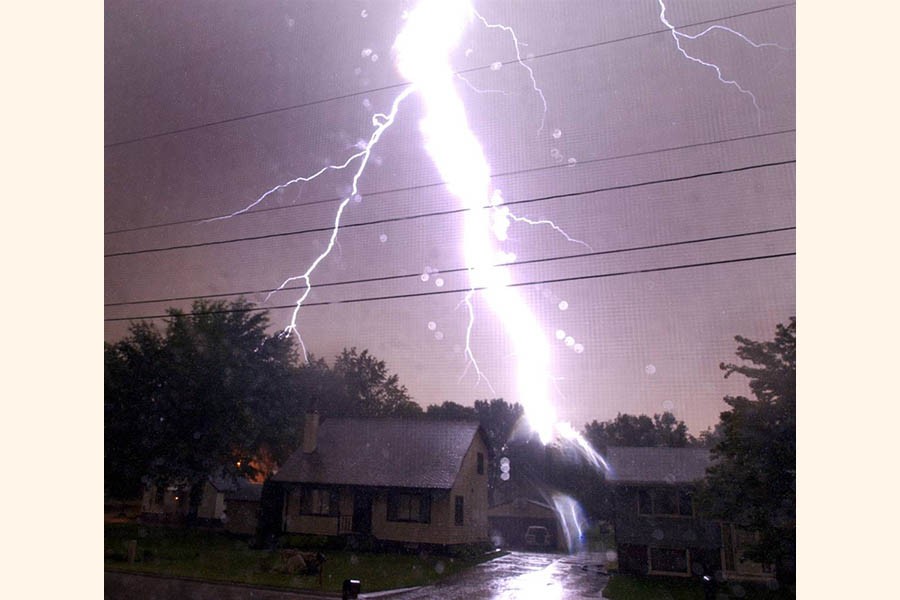
Published :
Updated :

Deaths from lightning strikes have been a common occurrence in the country for ages. Puzzlingly, their frequency has recently marked a sharp increase. Over the last 10 years, the lightning strike deaths have emerged as a virtual nightmare in the season of nor'westers, and also in the pre-monsoon time. In the recent countrywide thundershowers, around 30 people have reportedly been fatally stricken by lightning. Given the number of deaths in just a few days, the fatalities are feared to rise in the rest of the storm season.
Like in the past, it is the country's villages which are largely exposed to this unique wrath of nature. The rural people thus remain gripped by a sense of helplessness. The lightning-strike deaths have also been replete with superstitions and folk beliefs since ancient times. As seen in the case of one's becoming a patient of leprosy, a curse put on someone is believed to be causing that person's being killed by lightning strike. The same old scenario prevails even today. That lightning strikes are results of collision between cloud chunks eludes most of the villagers. They will also not believe that a thunderbolt may strike anyone anywhere during summertime storms. Mostly the farmers working in crop fields during thunderstorms fall victim to the deadly lightning strike. Besides them, passersby and youngsters playing in the open, are found fatally stricken by thunderbolts. In the urban areas, it is the pedestrians in the main who meet sudden deaths or get badly injured in lightning strikes.
In a troubling survey it has been found that lightning strikes killed a total of 99 people in the country in 2015. In the following year, the number shot to 351. In the year 2017 the death toll was 262. Against the backdrop of the occasional occurrences of thunderbolts in the country, the casualty totals are worrying. Lightning strikes are common phenomena in the USA, China and many other advanced countries. In those countries also, these natural occurrences were once viewed as a harbinger of death. Thanks to the wide application of lightning strike-absorbing technology, these countries now rarely see thunderbolt deaths. In fact, a remarkable cut in deaths from lightning strike is inextricably linked to education coupled with awareness. That the developed industrialised countries have been able to aptly deal with lightning deaths proves this premise. On the other hand, less developed countries, like Bangladesh and others in South Asia and many in Africa, continue to go through the trauma of these preventable deaths. Lightning is purely a phenomenon born of nature. It gives no scopes for preparedness. But a raft of precautionary measures can lead to a significant decline in its strikes.
These preventive measures include the device of earth-connections linked to metal headed poles and installation of lightning rods atop tall structures. In an age of pervasive radio transmission, the air remains filled with waves transmitted by ground stations. The transponders and towers used for these communications are said to attract lightning. Advanced countries place 'lighting arresters' on these installations. The device can be replicated in places where latest communication set-ups are in place. The electric pylons in the vast rural swathes of Bangladesh are often blamed for exacerbating lightning fatalities. An age-old tradition practised in the country is growing tall palm trees in the middle of fields. These trees suck in the thunderbolts, and let them be burnt.
The government has recently decided to provide as assistance Tk 0.2 million to the families of each of the farm labourers killed in lightning strikes. It's a noble step. But it will not stop lighting-strike deaths. Awareness building at individual and community levels is of utmost importance. However, people should follow the basic anti-lightning strike rule: No movement outdoors during thunderstorms.


 For all latest news, follow The Financial Express Google News channel.
For all latest news, follow The Financial Express Google News channel.